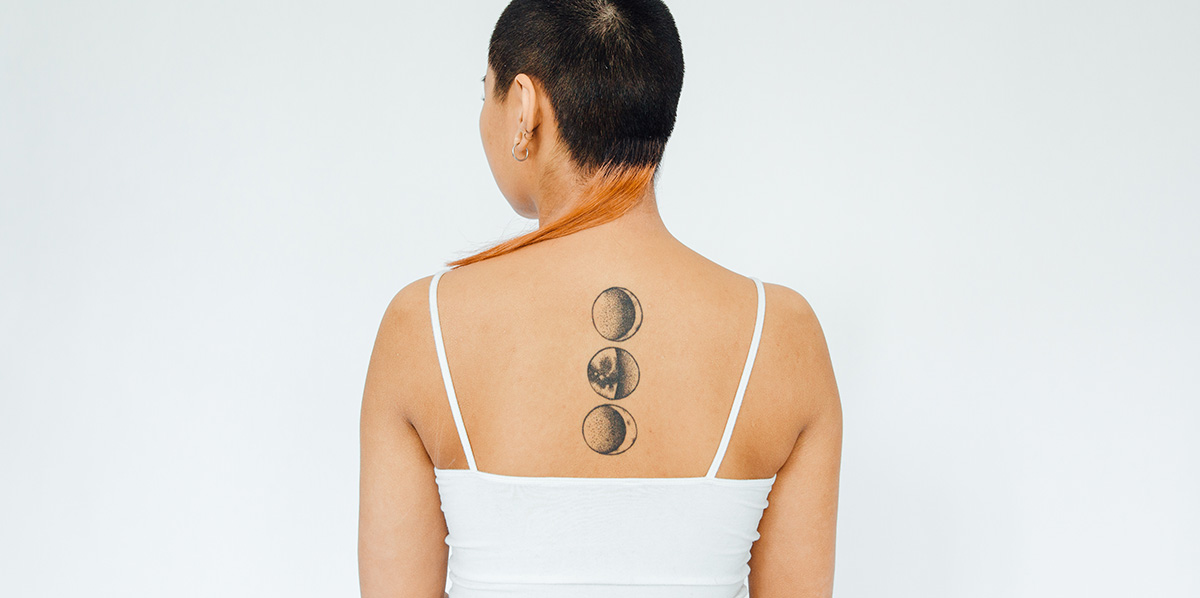There’s something uniquely stunning about the way spine tattoos flow with the body, following the curves of their owners’ backs. They come across as effortlessly beautiful; a quality that no doubt contributes to their popularity. The location is so popular in fact, that you’ll be hard-pressed to find a tattoo studio whose Instagram feed doesn’t include at least some spine pieces. But spine tattoos aren’t effortless. For both artists and clients, designs on the spine require great effort and can be painful to sit through.
How painful is a spine tattoo, though? Like every other tattoo, regardless of placement, it really depends. Two people getting matching designs in exactly the same location can experience very different levels of discomfort because each has a unique pain tolerance. Still, while it’s impossible to say for certain how much pain a spine tattoo will inflict, it is possible to promise that it will cause at least a bit of discomfort. And, in general, the spine is a more uncomfortable location for ink than others.
Why spine tattoos tend to hurt more
“It’s a major part of the nervous system,” explains Portland-based tattooer Seven McDougall. The spinal area is home to a large number of sensory nerves—the nerves responsible for our response to all physical sensation, including the puncture of a tattooer’s needle. And because these nerves are so plentiful there, the spine is more sensitive to pain. This is also the reason “tattoos that span over the spine may send strange sensations or buzzes down your arms or throughout your body,” she says.
But nerves are only one of the reasons spine tattoos tend to hurt more than others. The boniness of the area is also an important factor, according to Alba Rey, resident artist at Berlin’s UNIKAT tattoo studio. Areas of the body that are bony, especially under relatively thin skin, are nearly always more uncomfortable to get tattooed than areas with thicker skin and greater underlying fat, like the upper arm or thigh. Rey has also observed, in her own experience and through her clients, that as a result of both nerves and bones the “lower back or spine is the area where people are most likely to have a bad time.”
The length of your tattoo session will add to the pain
Time is one of the greatest factors at play when it comes to the amount of discomfort getting tattooed will inflict. The spine is already a more sensitive location for ink, and time only adds to that sensitivity, one of the biggest factors when finding out how painful a spine tattoo is. A small spine tattoo—like this Daniel Winter (known better as Winterstone) design on Sophie Turner—wouldn’t take more than 10 to 20 minutes to complete, but a larger design can take hours, sometimes over multiple sessions. “Small spine tattoos will hurt, but the tattoo will be done fast and the skin won’t be very sore. But for a big tattoo that takes longer to finish, the spine can be a really painful area,” says Rey. She notes that a medium sized spine tattoo could require one to three hours of tattooing while a large, detailed design would require more time, perhaps two to three sessions of several hours each.
McDougall adds that when it comes to tattoo pain, the body has a limit. “I personally can only sit for about two hours until I’m squirmy,” she says. “Some clients can last three or more hours, which is wild to me.” Although tattoo pain is numbed slightly by the body’s natural release of endorphins, after a certain point (usually a couple of hours into an appointment) when your blood sugar levels have depleted and your body has tired from the constant rush of endorphins and adrenaline, sitting through the pain becomes a lot more difficult.
There are a few effective ways to limit the pain
Distraction is McDougall’s pain suppressant of choice when getting tattooed. She finds that having a talkative, supportive friend at appointments helps clients relax and acts as a welcome distraction from the pain. If your studio doesn’t allow plus-ones or you prefer to go solo, another option is chatting with your tattooer (most banter with clients, knowing it helps alleviate some of the discomfort). She also says the majority of artists will allow clients to scroll through their phones, or even read a book or listen to music throughout their appointments, as long as it doesn’t lead to any additional flinching, which makes it far more difficult to complete a tattoo flawlessly.
And, in advance of a tattoo appointment, both McDougall and Rey stress the importance of taking care of your body. “Drink plenty of water, eat a decent meal, and keep the area moisturized during the days prior,” suggests McDougall. Rey adds that clients should, “have a good rest and try not to overthink. A tattoo should be an enjoyable experience full of change and empowerment.”
If you liked our post, “How Painful is a Spine Tattoo?”, visit the link below to learn more about placement and pain.
Related: 8 Things to Know About Getting a Tattoo on Your Back

